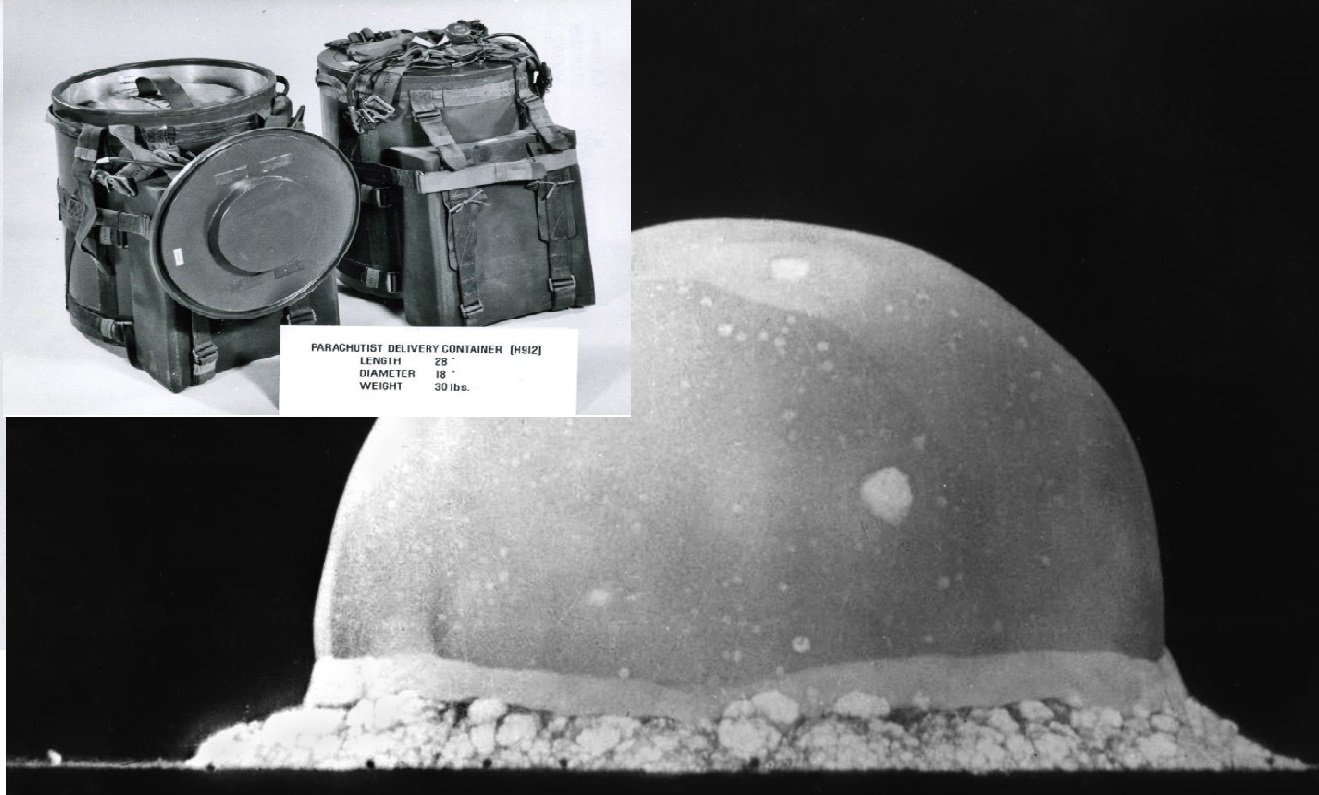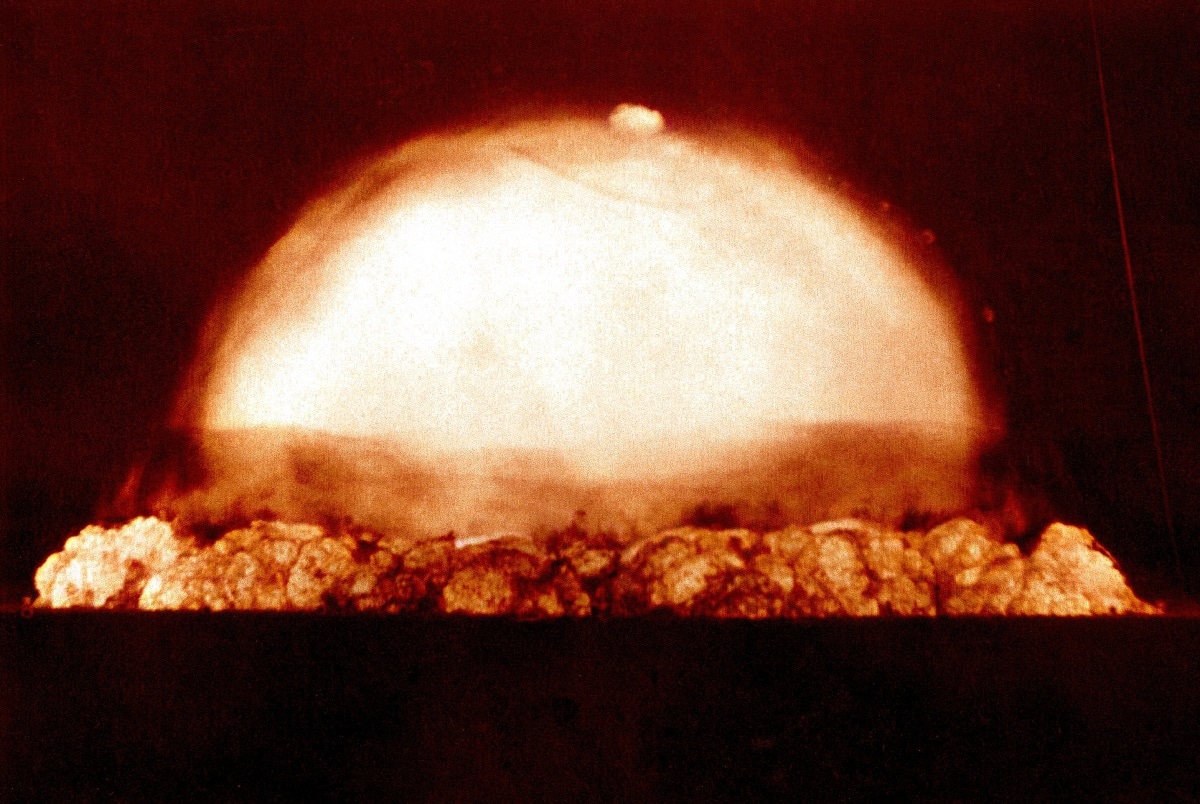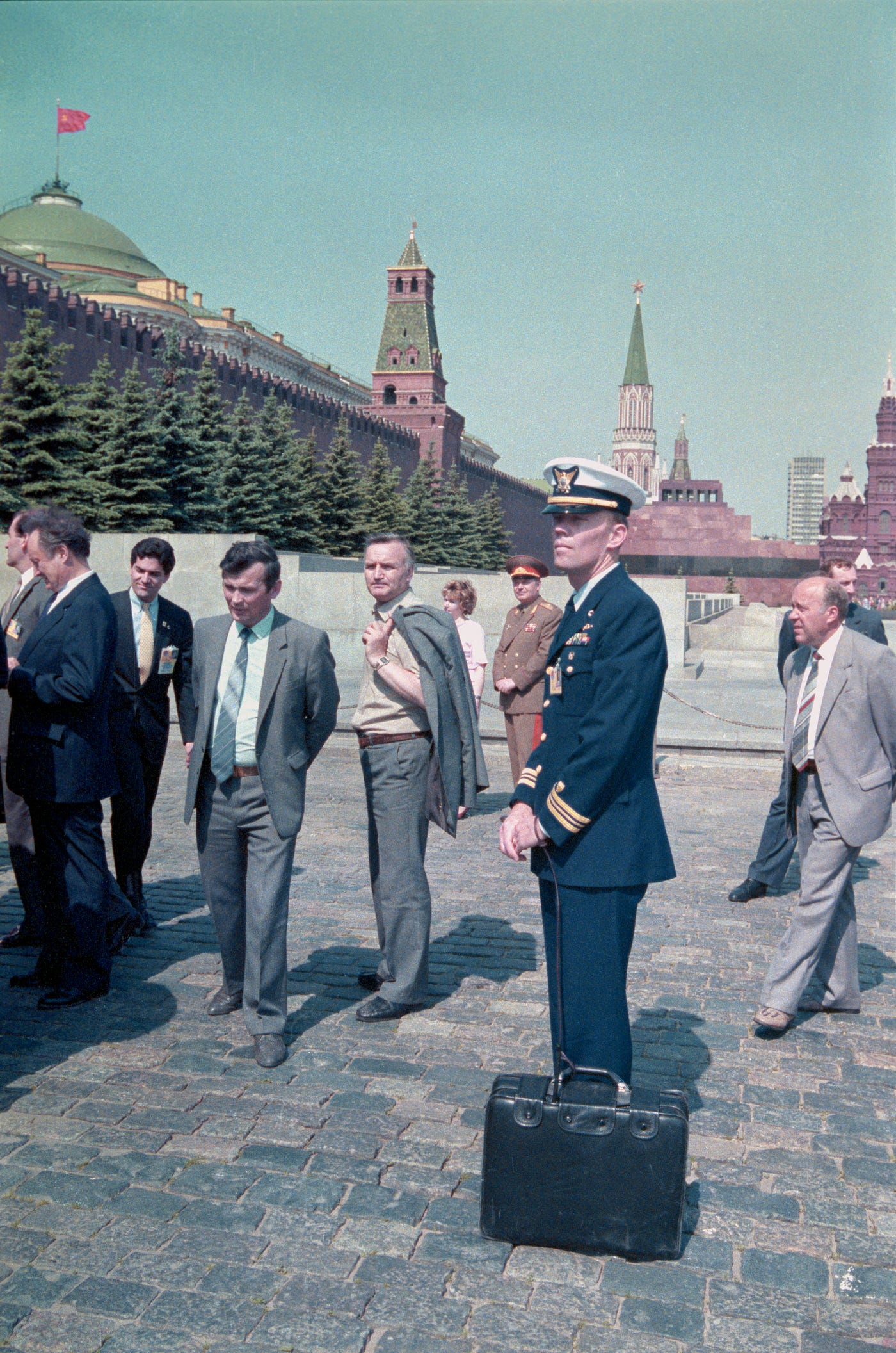Suitcase Nukes Missing - Here's what you need to remember: In 1997, former Soviet general Alexander I. Lebed gave an interview on 60 Minutes in which he claimed that the Soviet Union had built about 250 portable suitcase nuclear weapons, similar to the US B-54. .
Tactical nuclear weapons - compact, low-yield atomic bombs, not necessarily designed to be dropped on cities by bombers, or delivered via ICBMs, but could be artillery shells, nuclear torpedoes, mines, or other small and easily portable
Suitcase Nukes Missing

One of these tactical nuclear devices is a so-called "backpack" or "valise nuke" - essentially a very small nuclear device that can be transported in a bag or suitcase.
Nuclear Bomb Backpacks Are A Thing (and 100 Could Be Missing)
At the beginning of the Cold War, the United States and the Soviet Union envisioned war with the limited use of nuclear weapons.
In these limited-use scenarios, low-yield nuclear weapons could be used to prevent an enemy from using certain areas of the battlefield, or to eliminate high-value targets or personnel with a large explosive device, or to cause a mountain to form the battlefield. landscape - with a tactical nuclear bomb.
Such equipment should be easily transportable and not weigh more than 100 pounds, ideally even less. In the United States, the specially trained "Green Light Troops" are one of the most highly trained units in the United States Army. These Cold War soldiers were armed with a nuclear bomb small enough to fit in a backpack, the B-54 Special Atomic Demolition Munition (SADM), which entered the US arsenal in the mid-1960s .
The B-54" is 18 inches tall and encased in an aluminum and fiberglass frame. It is bullet-shaped at one end and has a 12-inch diameter control panel at the other. According to the manuals of the Army, “The weapon has a maximum. explosive yield of less than 1 ton - That is, equivalent to 1000 tons of TNT. To prevent unauthorized use of the bomb, the control panel of the SADM is sealed by a cover, which is closed by a combination. Luminous paint applied to the lock allows troops to unlock the bomb at night. "
The Cassandra Complex (ebook), Frazer Douglas
In the event of a war with the Soviet Union, Green Lantern teams could be deployed by NATO to Warsaw Pact countries to slow down Soviet forces by destroying supply depots or communications centers. There is also apparently a plan to place portable nuclear devices near command centers or other fortifications "to destroy critical on-site command and communication facilities."
In a 1997 interview with 60 Minutes, former Soviet general Alexander I. Lebed claimed that the Soviet Union had built about 250 portable suitcase nuclear weapons, similar to the US B-54. Rather shockingly, Lebed said, 100 items were missing and not accounted for in the Soviet stockpile.
Whether true or not, the US took the claim seriously. October 1999, "House Armed Services Committee Military Studies Subcommittee Hears Testimonies Regarding the Possibility of Pre-positioning MANPI by the Soviet Union on U.S.".
Caleb Larson is an advocacy writer for The National Interest. He has a master's degree in public policy covering US and Russian security, European defense issues, and German politics and culture. For fictional heroes like James Bond and Jack Bauer, finding lost nuclear weapons and saving the world is just a day's work.
The Bombs Bursting In Air: A Mike Elliot Thriller, Book Ii: Amazon.co.uk: Duffy, Lee: 9780996605328: Books
But WMD disappearing under the noses of the authorities is not just a spy story - it happens.
The United States government admits that 11 bombs were lost, but some experts believe that between 50 and 100 bombs were lost worldwide.
"The US Department of Defense has confirmed the loss of 11 atomic bombs. It is believed that as many as 50 nuclear weapons have been lost worldwide," said Outfried Nassauer, a nuclear weapons expert and director of the Center for Transatlantic Security Briefing in Berlin. .Cold War. "
British defense analyst Eric Grove believes the figure is higher, especially in light of Russia's development of "nuclear suitcases" - small weapons that can fit in a suitcase.
Nuclear Weapons And Nuclear Politics
On a recent episode of Radio 4's Punt PI, he said: "Of the 250 Soviet suitcase bombs, 100 are actually 'lost'. Although some experts believe that those 100 aircraft are located somewhere in the West".
Eric revealed that several hydrogen bombs were lost in the United States in an incident called "Broken Arrow" and were never recovered.
"During the Cold War, the nuclear stockpile was very large, and there were many bombs - thousands of them - too many actually for any possible strategic use, and the Americans were on air alert, so they put the bombers in the air.

COLD RAGE Mafia Boss Dissolved My 12 Year Old Brother In Acid - I Want Him To Die Slowly
Why Pelosi Can't Take The Nuclear Codes Away From Trump
In 1958, an American B-47 bomber returned from a test mission with a Mark 15 nuclear bomb on board as a formation of US Air Force F100 interceptors. conducted a simulated interception of a Russian invasion.
But one of the planes collided with the bomber, and the pilot decided to make an emergency landing on a nearby runway.
Finding that the runway was closed for construction, he decided to drop an 8,000-pound bomb off the coast of Georgia.
He landed on a mud flat and sank. Despite searches by frogmen, boats and airships above, he was never seen again.
Are 'suitcase Nukes' A Genuine Concern?
The US government denied that the bomb had a plutonium trigger, but in a letter written in 1966, Assistant Secretary of Defense WJ Howard described the bomb as a "complete weapon".
In February 1950, while flying from Alaska to Texas, a B-36 bomber lost power to three engines and began to lose altitude. To lighten the load, the pilots dropped nuclear Mark 4 (Fat Man) in the Pacific Ocean.
Upon impact, conventional explosives caused a flash and a shock wave, and the uranium component was never recovered. The Air Force later said that plutonium cores did not exist.

In January 1961, a B-52 bomber carrying two 24-megaton nuclear bombs crashed while taking off from an Air Force base in North Carolina.
North Korea's Uranium And Prospects Of A Stealthier Bomb
A bomb sank into the swamp, and despite digging 50 feet down, its uranium core was never recovered.
On December 5, 1965, an A-4E Skyhawk bomber carrying a 1-megaton thermonuclear hydrogen bomb slid off the deck of an aircraft carrier and crashed into the Pacific Ocean near Japan.
The US Navy did not acknowledge the incident until 15 years later, when it stated that the plane sank 500 kilometers from land.
But it was later discovered that the carrier was only about 80 kilometers from Japan's Ryukyu island chain.
Russians Find Asylum Lifeline To Us, But At A High Price
In 1968, an American B-52 bomber crashed in Greenland waters, and the explosives on board were detonated, causing radioactive contamination in a large area.
But, according to a BBC investigation, the reconstruction of the bomb's components showed that the warhead was missing and could have drilled through the ice, a fact that the US government did not disclose for decades.
In 1968, a nuclear attack submarine called the U.S.S. Scorpion sank about 400 kilometers from the Azores.

All 99 crew members were killed, and two unspecified nuclear weapons—missiles or torpedoes—were lost. The end of the Cold War may have made many feel more secure that the world seemed less likely to face a nuclear apocalypse, but there was an unforeseen problem: a lack of nuclear weapons.
Lost To History Or Possibly Just Lost, Meet The \
Before its disintegration in 1991, the Soviet Union produced more than 27,000 nuclear weapons, as well as enough uranium and plutonium to make three more weapons. Due to severe economic difficulties, widespread corruption, lax security and trust in bureaucratic systems, there have been concerns that some nuclear weapons and/or materials could be lost or stolen.
The former Soviet republics of Belarus, Kazakhstan and Ukraine returned all Soviet-era nuclear weapons to post-communist Russia in the 1990s, but there are concerns about how stockpiles of uranium and plutonium will be used. of weapons quality. The biggest fear is whether all nuclear weapons have been counted correctly. The Council on Foreign Relations warns that the International Atomic Energy Agency (IAEA) has reported more than a hundred incidents of nuclear smuggling since 1993, 18 of which involved highly enriched uranium.
The Nuclear Threat Initiative (NTI) also released a report in September 1997 that quoted former Russian national security adviser Alexander Lebed, who claimed that the Russian military had lost more than 100 nuclear suitcase bombs. Lebed, who made his case on CBS News
, each of which is proposed to be as powerful as a thousand-ton warhead capable of killing up to 100,000 people and detonated by a single person. However, Russia disputed that Lebed was wrong and may have confused the "virtual small" training device with a real weapon.
Russia Might Have Lost Over 100 Nuclear Weapons
In the nearly 24 years since the report was published, no known examples of Soviet-era suitcase bombs have been found, thankfully none.
Nukes, missing suitcase nukes, missing suitcase, no nukes, navy nukes, suitcase nukes, missing russian suitcase nukes, how many nukes are missing, jobs for navy nukes, missing russian nukes, russian suitcase nukes, missing nukes
0 Comments